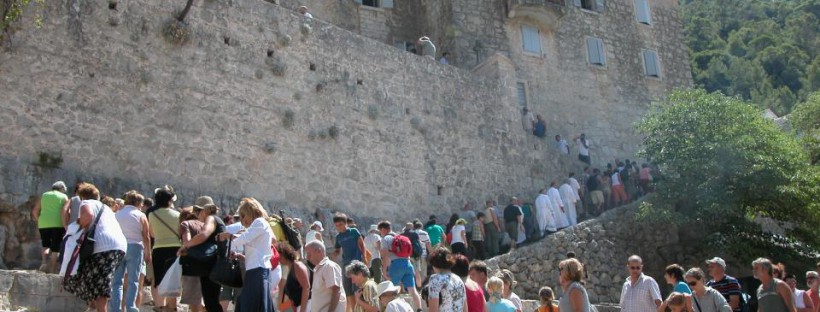It is nothing short of a miracle that residents of the Blaca Hermitage fought and conquered wild nature and the island’s barren land, surviving in such circumstances for whole four centuries.
Glagolitic monks of the Blaca Hermitage worked very hard to acquire many possessions – agricultural land, trading ships, a rich library, a printer, etc. Preserved items of the Blaca Monastery, which is nowadays a museum, include a valuable astronomic collection by the last hermit Don Nikola Miličević, who died in 1963. The Blaca Hermitage is an exceptional monument to human labour and endurance, with exceptional historical, economic, artistic and scientific amenities – a true natural and cultural phenomenon, an amazing oasis of peace and a keeper of times long gone. This unique combination of architecture and scenery paints a picture of times past and traditional way of living.
Ecomuseum
The idea of the Blaca Hermitage as an ecomuseum came to existence after the hermitage cooperative ceased to exist and the complex was sold to the Brač Municipality in 1972. In 1980s a Project for Revitalization and Use of Blaca Hermitage Cultural Monument and the proposal for the Blaca Ecomusuem were developed. This idea was further developed by the Brač Cultural Centre Museum Institution which has been managing the Blaca Hermitage since 1990s. Subsequent phases of this long-term project plan for museum building restoration, adaptation of farm buildings as well as revitalisation of Blaca’s economy, all in accordance with financial means.
Special acknowledgement
Since the area is hard to approach, rehabilitation and renovation of buildings as well as landscaping are very demanding, but are nevertheless successfully performed in cooperation with experts specialising in cultural and natural heritage protection. For example, repairs of rocks over museum buildings were very complex, from both the technical and safety points of view; all the necessary machinery was first disassembled and taken across the steep trail manually or using horses and since there is no electrical power or running water in the Blaca Desert, rainwater and power generators had to be used.
The museum today operates with a minimal number of hard-working employees and very limited capacities and a complete revitalisation of the area until the year 2020 would also mean great news for this protected landscape area’s tourist offer. Restoration of farm buildings would enrich the local wining and dining offer and Blaca Hermitage would, once again, produce its own wine, oil and honey. Don Nikola Miličević’s Observatory would also be restored and, with modern technology, this could become the Desert’s new tourist and science attraction.
At the beginning of this year the Directorate for the Protection of Cultural Heritage of the Ministry of Culture, in cooperation with the Brač Cultural Centre, entered the Blaca Hermitage Ecomuseum into the competition for the Council of Europe’s Landscape Award, awarded every two years. Even though Brač was not the winner, the international museum awarded a special acknowledgement to the Blaca Hermitage Ecomuseum, pointing out its exceptional cultural value and a strong boost to local sustainability, identity and sense of a community, making it a rich heritage site. For all those people who have worked hard for the last three decades to preserve this natural and cultural phenomenon, this serves a confirmation that they were moving in the right direction.
The Blaca Heritage Museum
Museum can be visited in the period between June and October each day except Monday, from 9 am to 5 pm, and from November to May each day except Monday from 9 an to 3 pm. Tickets for adults cost 40 kuna and those for children under the age of 14 are 10 kuna each. Visitors are advised to wear sports clothes and shoes, as well as to bring water or refreshing beverages with them since the Museum still does not have a food and drinks offer.




